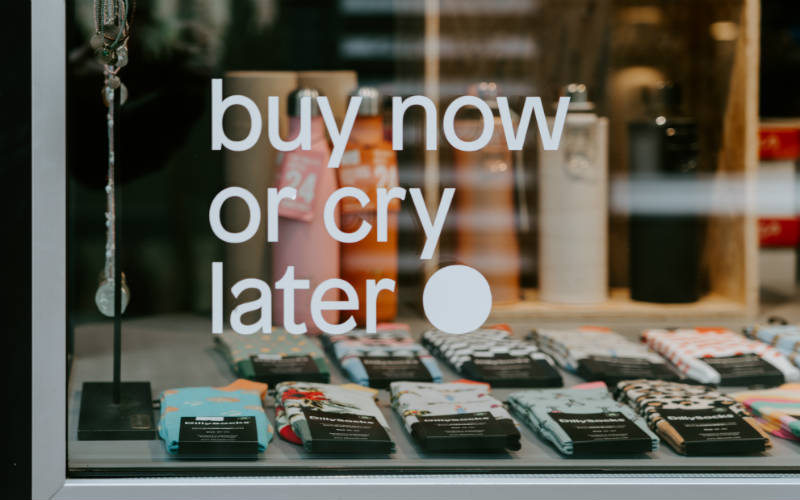The evolution of payment technology
The evolution of payment technology over the past few decades is quite startling. Since the first charge card was invented in the 1950s, we’ve seen a wave of innovation hit the payments landscape around the world.
The latest innovation to dominate payments technology discussions in the last couple of years is the emergence of buy now, pay later schemes (BNPL) in Australia, mainly Afterpay and Zip. Throughout this article, we’ll cover the basics of how Australia’s biggest BNPL player, Afterpay, makes money, how it works when you use it, and what the pros and cons are of using it.
Buy now, pay later in Australia – a summary
The basic premise of BNPL isn’t too different from that of the standard credit card. After all, a credit card uses ‘buy now, pay later’ in that you pay for something on credit and pay it off at a later date, and not doing so results in interest charges.
But securing a credit card typically requires approval after completing an application that includes proof of income. Conversely, BNPL providers generally allow anyone aged over 18 to use their services.
BNPL is already an enormous industry in Australia. Research from Roy Morgan found that in the 12 months to January 2019, 1.59 million Australians had bought something through Afterpay or Zip at least once. In 2020, over 12.3 million Australians (59%) were aware of buy-now-pay-later services, an increase of more than 20% from 2019.
These two platforms aren’t the only ones, but they are the biggest by far. Afterpay has roughly 3.4 million active customers in Australia, while Zip has about 2.5 million each. Other BNPL services available include:
Afterpay and Zip are the two current titans of by now, pay later in Australia. This article will cover Afterpay, while you can read our analysis of Zip here.
Who uses buy now, pay later?
As you can see in the graphic above, these platforms are popular with the younger generations, which is unsurprising when you consider their marketing is almost entirely targeted at them. According to Roy Morgan, 40.6% of buy now, pay later transactions are made by millennials, while Gen Z occupies another 35.1%. Gen X (1961-1975) represents 19.1% of transactions and boomers and pre-boomers account for the remaining 5.2%.
See also: Why is buy now, pay later so popular with millennials?
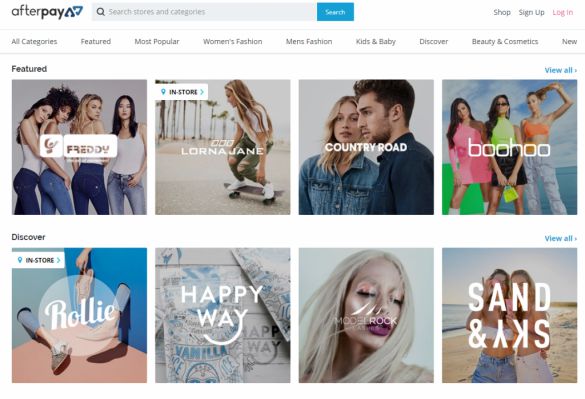
Much of Afterpay's marketing is targeted at younger generations.
Source: Afterpay
How does Afterpay work?
Afterpay’s premise is simple: by paying for your shopping using the app, you can take it home before you’re finished paying for it. With Afterpay you have to pay for at least a quarter of the payment upfront, while the rest can be repaid in fortnightly instalments.
It’s connected to a large variety of stores, and when making a purchase you’re given a randomly-generated barcode which the retailer then scans.
Does Afterpay do a credit check?
There’s no credit check when signing up to Afterpay. You just need to be at least 18 and have a debit or credit card you can link to your account. However, it does adjust your credit limit based on your repayment history. At first, it usually sets a limit of $500 for debit cards and $1,000 for credit cards, and you’re cut off from using Afterpay further once these limits have been reached. But if you demonstrate you can pay off your Afterpay balances on time every time, your available limit will increase to a maximum of $1,500.
If you fail to meet your repayments on time, you’re cut off from making further purchases through Afterpay until all late payments have been cleared.
See more about how BNPL can affect your credit score here.
How does Afterpay make money?
There are two main ways Afterpay makes money:
- Late fees
- Merchant fees
1. Late fees
The structure of Afterpay’s late fees is simple: you’re charged $10 for not meeting a repayment by the due date, and another $7 is charged if you fail to meet the repayment within seven days from the due date. Afterpay charges these fees instead of charging interest. But the late fees still have the ability to stack up on unsuspecting customers. Missing all four repayments on a $300 purchase, for example, can see you charged up to $68 in late fees.
Afterpay has attracted a volley of criticism from many industry stakeholders over late fees, with some saying it’s inherently predatory in nature. But according to Afterpay’s data:
-
A vast majority (93%) of Afterpay transactions incur no late fees (How Millennials Manage Money report, commissioned by Afterpay Touch Group)
-
Less than 20% of Afterpay’s total income comes from late fees (Afterpay H1 FY19 report)
Also, Afterpay has caps on late fees for smaller purchases. According to their terms of service:
-
(a) For each Order with an Original Order Value below $40 – a maximum of one $10 Late Fee may be applied
-
the aggregate sum of the Late Fees applied in relation to the Order will not exceed 25% of the Original Order Value (e.g. a $108 Order will have up to $27 (25% x $108) of Late Fees applied)
2. Merchant fees
The majority of the platform’s income is derived from merchant fees (that’s fees Afterpay charges the store for purchases made using its platform). Afterpay has 48,000 merchant partners, which includes major brands like David Jones, Adidas, Country Road, The Iconic and more.
According to its most recent update, Afterpay said it charged a 30 cent fixed transaction fee and a commission on sales between 3% and 7%. The idea behind this business model is that despite giving a portion of each sale to Afterpay, stores will earn more through increased sales.
What are the dangers of using buy now, pay later?
Based on what we’ve told you so far, there are some obvious and not so obvious reasons why using Afterpay isn’t always a good idea.
1. You can accrue unnecessary late fees
You might’ve picked up on this already given what we explained above. Although the late fees on these platforms aren’t massive, they can add up over time, especially if you can’t afford to pay off your debts for an extended period. Even though Afterpay’s fees might seem small, they can still add up.
2. Minimal credit checks
The average Australian is…not good with credit. Reserve Bank calculations show credit card debt is roughly $2,000 per person. And people who have debts will find it harder to acquire new credit cards since these debts and missed repayments will go on their credit reports, warning future lenders about their bad behaviour.
Compared to credit cards, Afterpay is not as strict with their credit checks. So even irresponsible spenders could potentially use these platforms.
3. There’s the temptation to overspend
Spending with Afterpay is easy – so easy it can lead you to spend more than you otherwise would. A review of BNPL arrangements by ASIC in November 2018 found ‘the majority’ of these users admit easy credit lead them to spend more than they otherwise would, and one in six users reported experiencing at least one negative impact as a result of using them, such as delaying other bill repayments.
A more recent report found one in five customers are missing payments, half of which are incurring late fees. The average transaction value using Afterpay is $150, while most purchases are spent on non-essential items if this infographic from competitor Zip is anything to go by.
4. It can affect your ability to apply for credit
Lenders may not take kindly to Afterpay customers when reviewing their application for a big loan (e.g. home loans or car loans), despite the fact these services don’t have a direct impact on credit scores.
Lending requirements have tightened somewhat since the Royal Commission, with tales told of lenders knocking back applicants because they overspent on Uber Eats, or had an outstanding Afterpay balance.
Spending with Afterpay instead of buying outright could be regarded as simply shifting debt to another vehicle, so lenders will still consider this alongside your debts, expenses and overall risk profile before deciding to give you a loan.
5. It's easy to apply for
As a test, I decided to apply for Afterpay to see how long it would take and what the general process is. The only steps were the kind you’d expect when signing up to any other website:
-
Creating a username and password (complete with a “yes” or “no thanks, I don’t like great deals” option when asked by Afterpay to sign-up to their newsletter)
-
Providing your phone number
-
Entering a verification code sent to your phone number
-
Entering your name and date of birth
-
Entering your bank account information (not required immediately)
Overall though, there was little to no effort involved in signing up, which is one of the major selling points for both platforms – they’re designed for you to be able to sign-up at the counter as you’re about to pay.
Here’s how long it took me to sign-up for Afterpay:
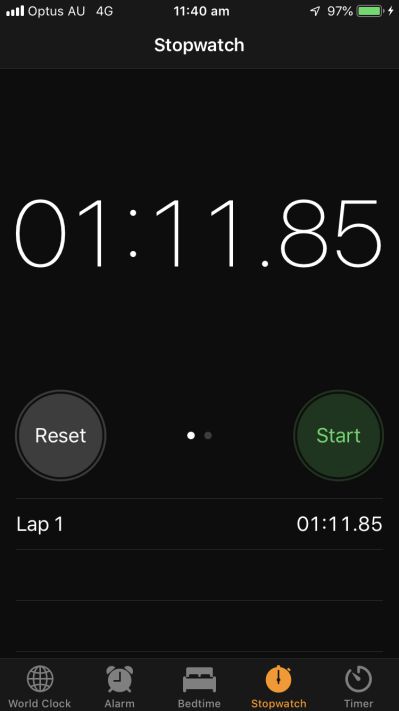
That’s one minute and eleven seconds it took to sign-up for Afterpay (granted I was hustling to get it done quickly). Of course, a fast application process can also be a positive feature of BNPL platforms, as long as they’re used responsibly.
Are there any positives to using Afterpay?
BNPL isn’t all bad. There are actually legitimate reasons why you might want to use them.
The main benefit is the ease of application – we mentioned this as a negative before, but the fact that it can take as little as 1-2 minutes and doesn’t require a credit check makes them much easier to sign-up for than credit cards or even debit cards. Combined with the fact that you can start using them instantly (instead of waiting for a card in the mail) makes them much more appealing for time-poor consumers.
Also despite the merchant fees, it’s often cheaper to buy with Afterpay online since they sometimes have special deals running.
The repayment framework is simple, and depending on the type of customer you are, you might prefer to spread out your repayments instead of bulk-buying the whole thing at once. After all, you might have to do some shopping while you wait for payday, so BNPL can help manage your finances. According to Afterpay’s ‘How Millennials Manage Money’ report, 57% of millennials (the biggest users) use Afterpay because they feel it helps them better manage their finances.
Finally, the late fees on these services are often far less than the interest costs you’d end up paying on similar purchases with credit cards.
Afterpay vs credit cards: Which is better?
Afterpay’s report found credit cards are starting to go out of fashion: Just 41% of millennials now own a credit card versus two-thirds of older generations. Around 14 years ago, 58% of young people owned a credit card. Millennials are also 37% less likely to own a credit card because they see them as being too risky and too costly – they have about half as much credit card debt compared to older generations. The overall number of credit card accounts fell by more than 7% in 2020 alone across all age groups, according to RBA data.
So why are services like Afterpay becoming more popular, while credit cards aren't? There might be a few reasons:
-
Afterpay is easier to apply for: minimal credit checks and applications take minutes, compared to credit cards which take much longer, require more documentation and take days to send a physical card.
-
The penalties of missing repayments are smaller: $10 fees pale in comparison to interest rates as high as 20% or more in interest. We’ve run some calculations on how credit card interest can accumulate (the answer is very quickly).
-
The staggered repayment plan of Afterpay can help with discipline and budgeting: unlike credit cards, which simply charge you interest on any outstanding debt remaining on the card by the end of the interest-free period
-
Easier choice: there are dozens and dozens of credit cards on the market, but Afterpay works essentially the same way for everyone.
-
Afterpay has a smaller credit limit: this can also be a bad thing, but a lower credit limit means you can’t easily accrue thousands and thousands of dollars of debt. Afterpay can also stop you from making further purchases once you’ve missed a payment, which credit cards don’t do until you hit your credit limit.
Savings.com.au’s two cents
All things considered, BNPL services like Afterpay may not be all that bad. Sure, they have their flaws – they can encourage reckless spending, acquire late fees you wouldn’t get with spending outright and can generally get you into trouble. But these issues are only a problem if you lack discipline. If, for example, you used by now, pay later platforms for spending you’d do anyway, then they can be very useful for spreading your spend over several weeks/months.
Plus, certain outlets actually offer discounts for people who shop using either of these services, so you can actually save money on some transactions.
If you do decide to use these services, just make sure you don’t spend more than you normally would, and always make sure you pay off all balances you accrue. Given the majority of buy now, pay later users are the younger generations, it’s increasingly likely these platforms represent the future of payments, and won’t be going away any time soon.
Photo by freestocks.org on Unsplash



 Brooke Cooper
Brooke Cooper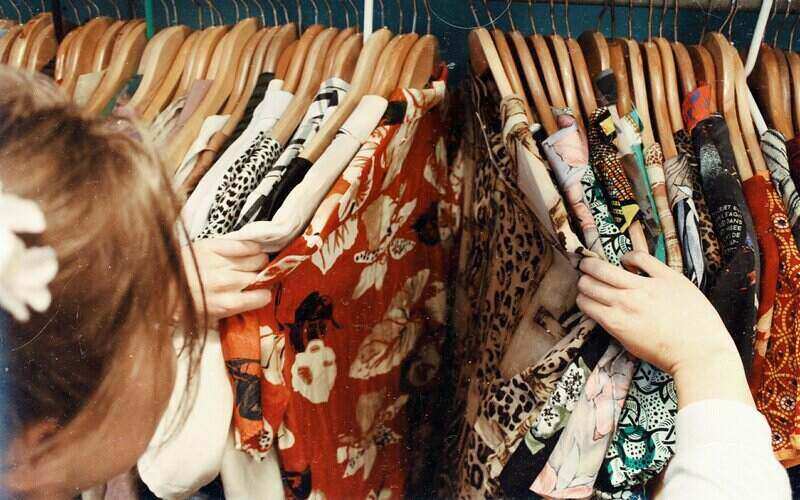
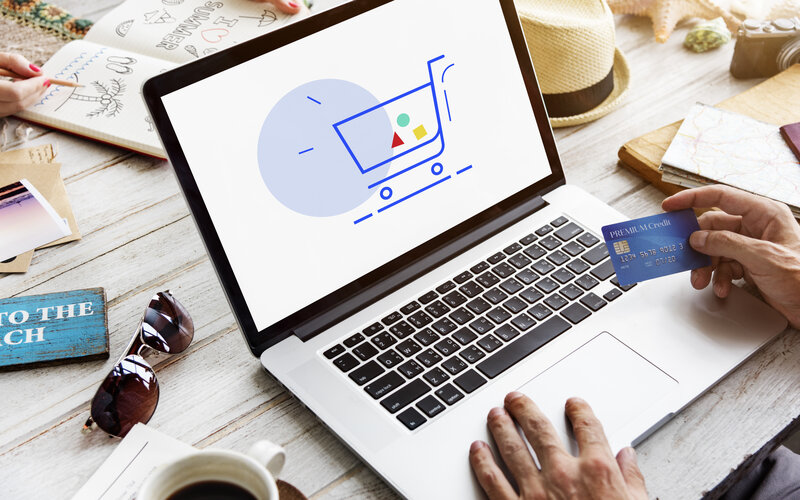
 Hanan Dervisevic
Hanan Dervisevic
 William Jolly
William Jolly

